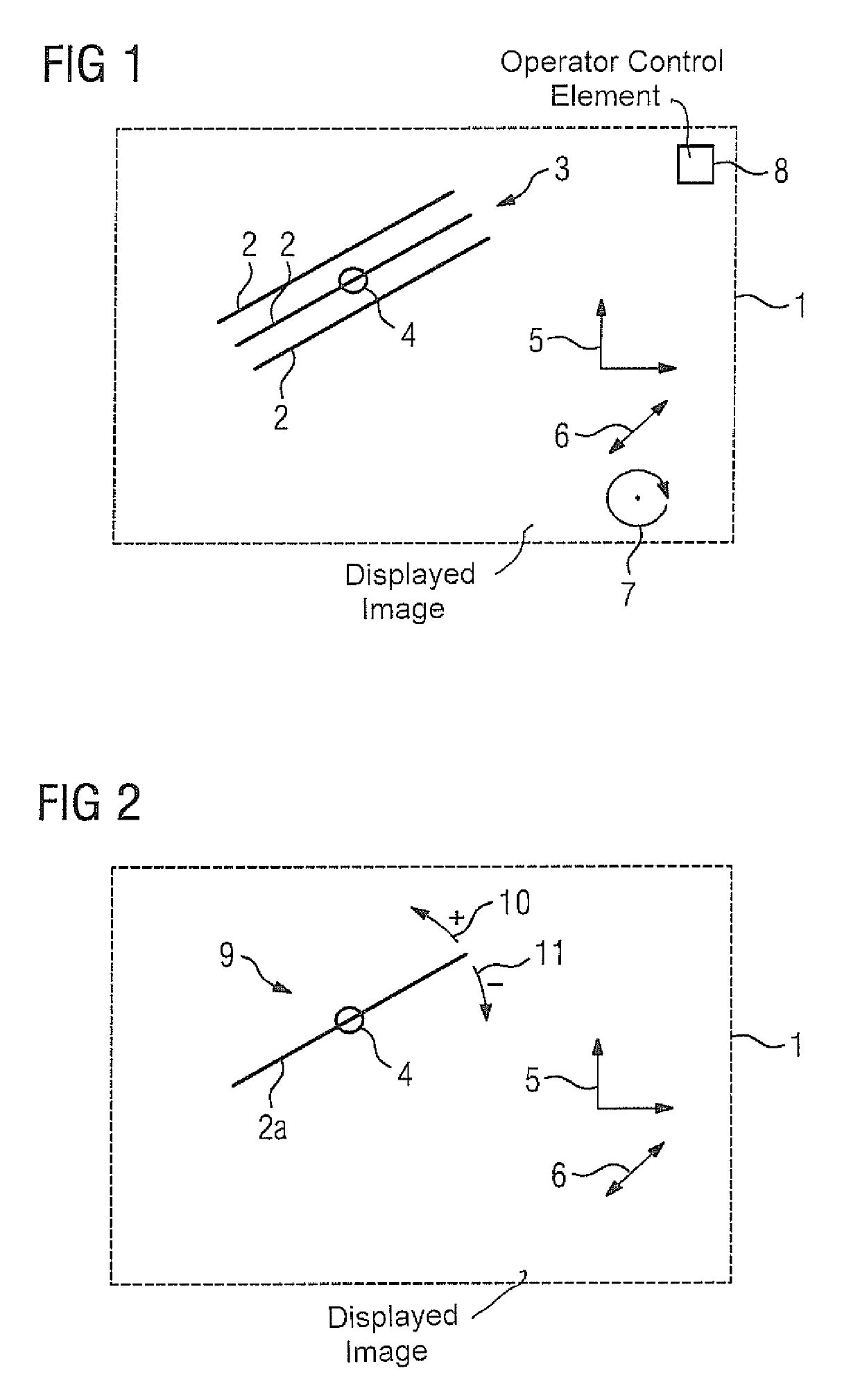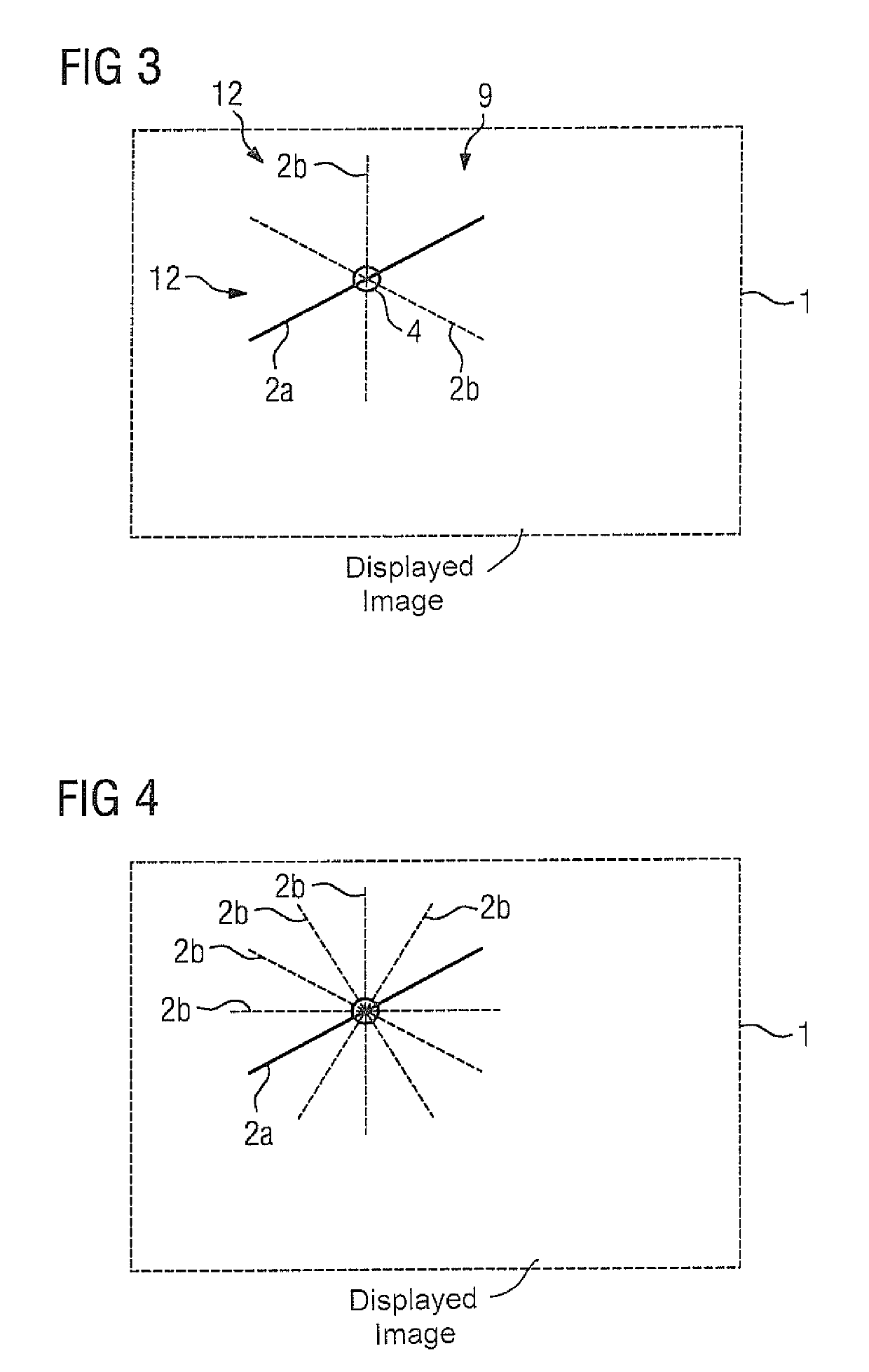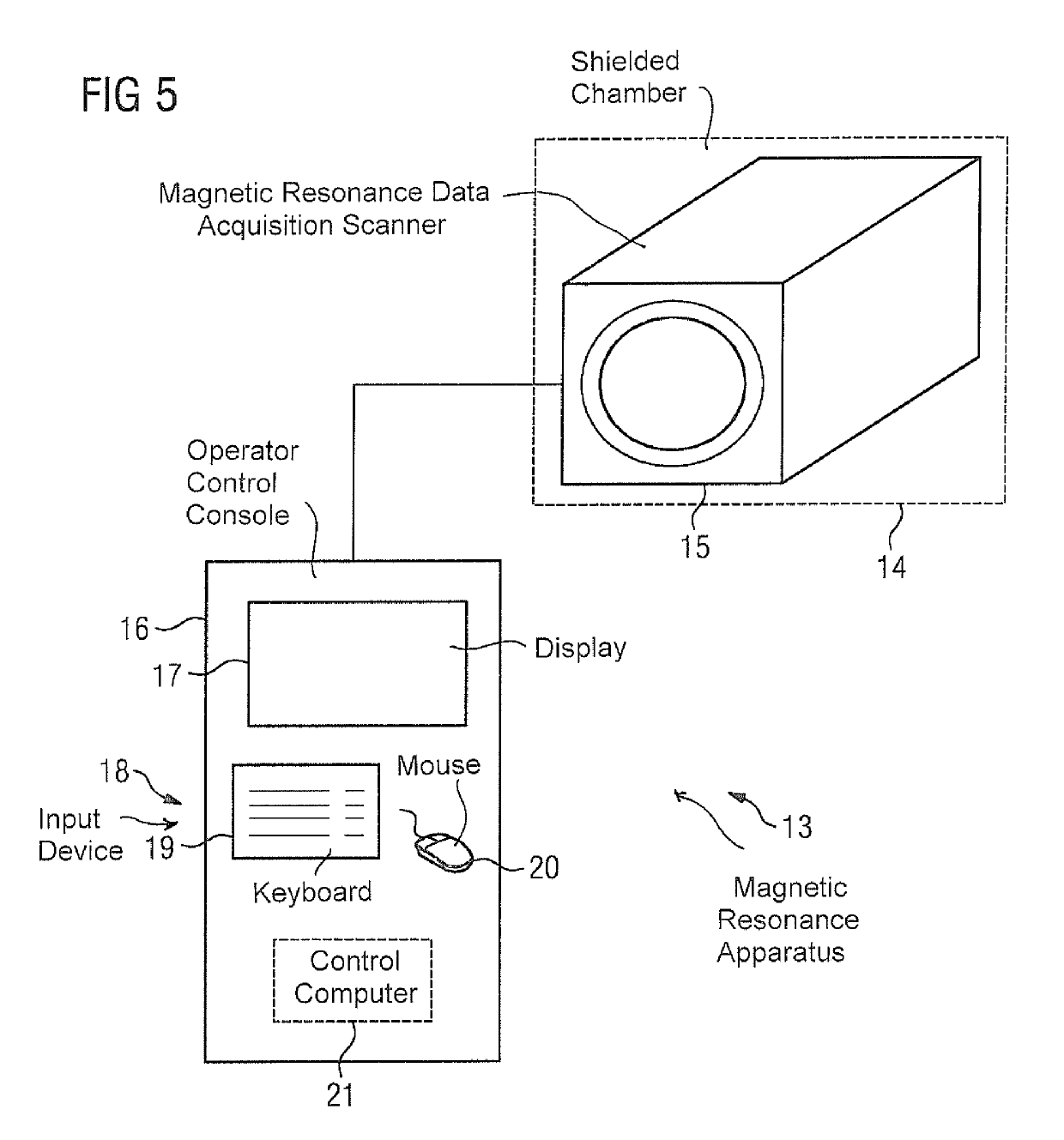Method and magnetic resonance apparatus for setting acquisition parameters of a scan protocol
a technology of magnetic resonance apparatus and scan protocol, which is applied in the direction of image enhancement, measurement using nmr, instruments, etc., can solve problems such as interruption of working practice, and achieve the effect of convenient implementation
- Summary
- Abstract
- Description
- Claims
- Application Information
AI Technical Summary
Benefits of technology
Problems solved by technology
Method used
Image
Examples
Embodiment Construction
[0029]An exemplary embodiment of the method according to the invention is explained in more detail below with reference to the schematic diagrams of FIGS. 1 to 4. This concerns a graphical slice planning method that has been extended to include the definition of acquisition parameters when using slices rotated with respect to one another, or slice groups generally containing at least one slice. It should be noted that the graphical representations shown here are basically presented as overlays on (selectable) images of the anatomy of the patient that is to be scanned, in order to be able to permit a corresponding intuitive orientation on the part of the operator. For clarity of illustration, further details of these images are not shown, and it should furthermore be noted that the images may be derived from previously acquired magnetic resonance data of the patient, in particular from magnetic resonance data of a localizer scan.
[0030]FIG. 1 shows a graphical representation in a slic...
PUM
 Login to View More
Login to View More Abstract
Description
Claims
Application Information
 Login to View More
Login to View More - R&D
- Intellectual Property
- Life Sciences
- Materials
- Tech Scout
- Unparalleled Data Quality
- Higher Quality Content
- 60% Fewer Hallucinations
Browse by: Latest US Patents, China's latest patents, Technical Efficacy Thesaurus, Application Domain, Technology Topic, Popular Technical Reports.
© 2025 PatSnap. All rights reserved.Legal|Privacy policy|Modern Slavery Act Transparency Statement|Sitemap|About US| Contact US: help@patsnap.com



